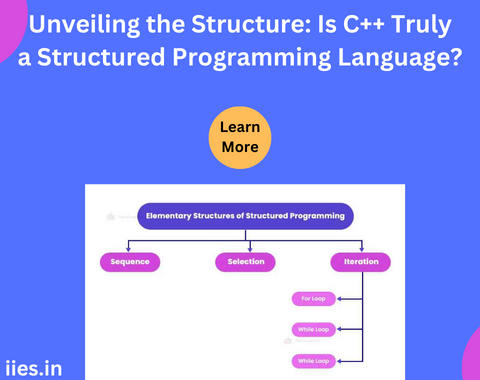Stroustrup aimed to provide additional features for object-oriented programming while retaining the efficiency and low-level capabilities of C. C++ introduced features like classes, objects, and polymorphism, which made it a powerful tool for software development. However, the introduction of these features led some to question whether C++ remained a strictly structured programming language.
Structured Elements in C++:
Despite the incorporation of object-oriented features, C++ retains its roots in structured programming. The language includes all the fundamental elements of structured programming, such as sequential execution, loops, and conditional statements.
1. Sequential Execution:
C++ programs are executed sequentially, with statements being executed one after the other. This fundamental aspect aligns with the structured programming paradigm, ensuring a clear and predictable flow of execution.
2. Loops:
C++ provides loop constructs like “for,” “while,” and “do-while,” enabling developers to create repetitive structures. These loops contribute to the modularization of code, allowing for the efficient handling of repetitive tasks without resorting to convoluted control flow.
3. Conditional Statements:
The inclusion of “if,” “else if,” and “else” statements in C++ facilitates decision-making within the code. This conditional branching is a crucial component of structured programming, as it allows developers to execute different blocks of code based on specified conditions.
4. Functions:
C++ supports the creation of functions, promoting modularity and code reuse. Functions encapsulate specific functionalities, contributing to the structured organization of code. By dividing the program into smaller, manageable functions, developers can enhance readability and maintainability.
5. Data Structures:
While C++ allows for complex data structures, such as classes and objects, it also supports traditional structured data types like arrays and structures. This flexibility enables developers to choose the level of abstraction that best suits the requirements of their programs.
Object-Oriented Features and Structured Programming:
One of the primary criticisms leveled against C++ regarding its status as a structured programming language is the incorporation of object-oriented features. Critics argue that object-oriented programming (OOP) introduces complexity and deviates from the simplicity advocated by structured programming.
However, it’s essential to recognize that C++ allows developers to use object-oriented features selectively. One can still write C++ programs using only structured programming constructs without delving into the intricacies of classes and inheritance. The choice to adopt OOP features is left to the discretion of the developer, allowing for a pragmatic approach based on project requirements.
Benefits of Object-Oriented Programming in C++:
While purists may argue that object-oriented features complicate the structure of C++ programs, proponents highlight the advantages these features bring to software development.
1. Modularity:
Object-oriented programming promotes modularity by encapsulating data and behavior within classes. This encapsulation allows for the creation of reusable and easily maintainable code components.
2. Abstraction:
Abstraction in OOP enables developers to model real-world entities and their interactions. This abstraction simplifies the representation of complex systems, enhancing the overall design and understandability of the code.
3. Inheritance:
Inheritance allows for the creation of new classes based on existing ones, fostering code reuse and extensibility. While this feature introduces a level of complexity, it also contributes to the organization and structure of code.

